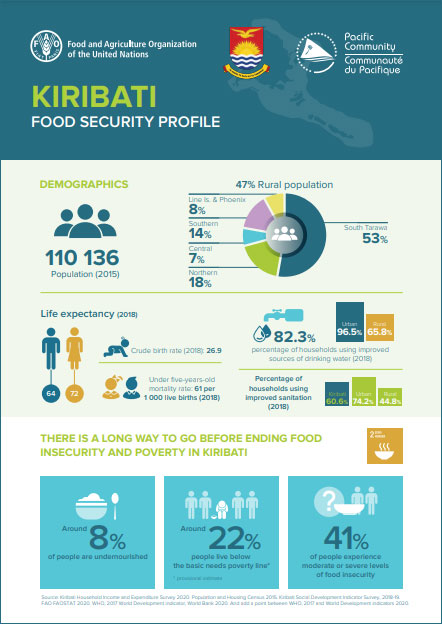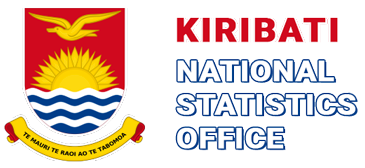The Kiribati National Statistics Office is pleased to share the Kiribati Food Security profile, which is an output of the 2019 Household Income and Expenditure Survey. The Food Security Profile reports on Target 2.1 of the Sustainable Development Goals (SDGs), which aims to, “by 2030, end hunger and ensure access by all people, in particular the poor and people in vulnerable situations, including infants, to safe, nutritious and sufficient food all year round”.
Specifically, the Food Security Profile reports on the following indicators:
- SDG 2.1.1: The Prevalence of Undernourishment in Kiribati is 8 percent. That is, around 1 in every 12 I-Kiribati’s habitual food consumption is insufficient to provide the dietary energy levels that are required to maintain a normal active and healthy life.
- SDG 2.1.2: The Prevalence of Moderate or Severe Food Insecurity in Kiribati is 41 percent. That is, a little less than one in every two I-Kiribati experienced moderate or severe food insecurity in the past 12-months whereby they possibly experienced hunger, or they did not have regular access to safe and nutritious foods.
The Food Security Profile also provides a wealth of information on dietary energy consumption, food sources, food costs and nutritional adequacy of I-Kiribati. The Food Security Profile is accompanied by a more comprehensive report on Food Consumption Patterns in Kiribati, which will be published soon.
The production of the Food Security Profile was a joint collaboration between the Kiribati National Statistics Office, the Pacific Community (SPC) and the Food and Agriculture Organisation of the United Nations (FAO).

⇩ Download Kiribati Food Security Profile (PDF, 1.4Mb)
